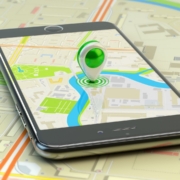Geofencing – Your Ultimate Guide
What is Geofencing?
Geofencing is about creating virtual geographic fences around physical locations for targeted mobile advertising.
Look closer, though, and you’ll find that geofencing is far more sophisticated and even more rewarding. It allows brands to understand how their customers behave in the physical world, how often they visit the neighborhoods where their stores are located, and how long they stay in those areas.
Geofencing (also known as “mobile geofencing”) is the application of defining a set geographic perimeter around a location. Oftentimes the output of this method is to prompt an advertisement based on location data signals derived through a mobile phone. These alerts are triggered when a mobile device enters the radius around a pre-established point of interest on a map and users have opted into the app’s location services. Geofencing is most often used in advertising to send an ad to a user through an app. This can be in the form of a promotion, sale, or a simple reminder to drop in. Marketers can even create a geofence around a competitor’s location so a customer will receive an ad when they get close to their store. This type of geofence is called geo-conquesting.”
How Geofencing Creates Better Ads
Mobile currently represents more than two-thirds of all digital ad spending, and marketers continue to invest; in 2021, spending is expected to top $117 billion, eMarketer reports. Increasingly, brands are looking to geofencing technology to help them create more targeted and effective ads.
Geofencing isn’t particularly new, but as brands have evolved their mobile advertising strategies to better reach potential customers wherever they are, this marketing tool has become invaluable. By leveraging geolocation — the geographical location of devices connected to the Internet — geofencing allows marketers to create virtual boundaries around brick-and-mortar business locations (geofences), and deliver mobile ad messages when consumers enter them. The ultimate objective of geofencing is to provide value through mobile advertising — and one of the best ways to do that is by sending messages that are immediately useful to consumers.
WiFi and GPS are used to alert marketers when a mobile device enters the defined perimeter. The location data signals then trigger an email, text, app, or media ad notification. For the consumer, all of this results in some form of promotion, like a sale or a simple reminder to drop into a nearby store. The location-specific message is relevant to where the consumer is at that very moment, which enables your potential customer to take immediate action.
In short, with geofencing you can:
- Target a hyper-specific area
- Deliver relevant media
- Eliminate waste by targeting specific areas
- Reach customers in real-time
Geofencing in Action
Imagine your marketing goal is to increase foot traffic to your newest restaurant location. You can use geofencing to set up a boundary around the neighborhood in which your business is located. When consumers enter that virtual fence, you can serve them a mobile ad for your restaurant, along with your address and an exclusive offer or limited-time discount. You can even encourage users to download your mobile app and peruse your menu or additional deals.
Whether you’re launching a new menu item, promoting a seasonal special, trying to increase your lunch business, or simply trying to expose more locals to your restaurant, geofencing empowers you to achieve your mobile marketing objectives. Its value extends to retailers, big-box chains and department stores, coffee shops, grocery chains, and virtually any kind of physical business. Setting up a geofence around the boundaries of a mall, for example, can be useful when you want to attract customers to a sidewalk sale or alert them to a new store opening. Once mobile users enter your predetermined boundary, you can serve them that targeted messaging.
The Role of Geofencing in Conquesting
The advantages of geofencing aren’t limited to brand and product promotion. This same technology can also be used to create a geofence around a competitor so that a customer receives an ad for your business when they get close to your competitor’s store.
The objective here is to persuade them to come to your business rather than go to a rival’s. If a customer is nearing a competing clothing retailer, for example, you can serve them a product coupon for your store and remind them that it, too, just steps away. This type of geofencing is an ideal way to drive foot traffic to your business
The Future of Geofencing
What does the future of geofencing hold for marketers? Watch for increased personalization. One of the key advantages of this technology is that it facilitates the creation of customized ads built around consumers’ immediate circumstances. When a consumer crosses the virtual boundary, the opportunity to personalize ad messaging begins. Studies show that 63% of consumers now expect personalization when they receive special offers, so it’s important to customize yours.
The ability to cater your messaging to your audience’s real-time needs
- by offering discounts and promotions related to their physical location
- is invaluable when it comes to providing a valuable digital marketing experience.
The more that marketers tailor their call to action for consumers, the better your chance of boosting acquisition and retention while also building brand loyalty and affinity.
To learn more about TBI Digitals’ geofencing marketing platform contact us at [email protected].




